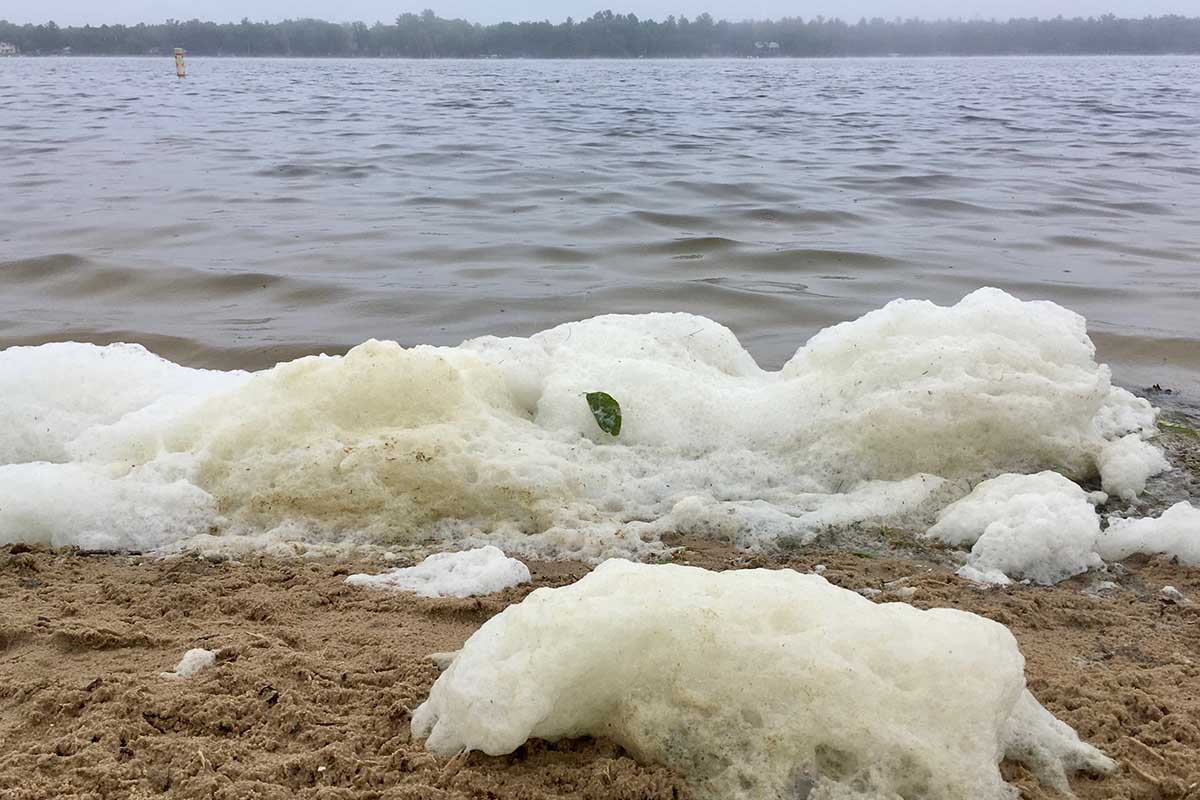
Some recent Michigan news headlines have featured images of foamy lake and river water attributed to excess levels of PFAS (per-and polyflouroalkyl substances), a class of over 3,500 human engineered chemicals developed since the 1940s. Without knowledge of how they would affect the human body or ecosystems, these substances have been incorporated into a wide range of products including: firefighting foam, non-stick coatings, water repellant clothing, stain resistant carpeting and fabrics, floor cleaners, waxes, paints, insect traps, microwave popcorn bags and more.
In addition, perfluorinated compounds, a subgroup of PFAS, have been referred to as “forever chemicals” because the chemical bond that holds the molecules together is the strongest chemical bond. Some PFAS compounds, perfluoroalkyl acids are also highly mobile in water and are bio-accumulative, meaning they build up in organisms faster than they can be excreted. The human health impacts of these substances are still poorly understood but have been linked to a number of health related problems including but not limited to certain types of cancers.
The GLA has been doing its part to stay up to date on this emerging water/health issue. Several members of the GLA board and Guardian Ambassador Tricia Denton participated in an international “virtual town hall” on threats to groundwater sponsored by Circle of Blue, Bridge and Detroit Public TV. The GLA also sponsored Rob Karner, Watershed Biologist, and Tricia Denton, to attend the annual Michigan Inland Lakes Convention in Grand Rapids, Michigan where among the many seminars that were attended, one featured a workshop on two PFAS subgroups PFOS and PFOA.
In the wake of news related to contaminated sites, the Michigan Department of Environmental Quality (MDEQ) conducted testing of municipal water systems and schools across the state. The private municipal water system for many of the residents of a neighboring lake in northwest Lower Michigan–Walloon Lake–was part of this statewide testing. Interestingly, PFOA and PFOS chemicals were found to be present in the drinking water but in what is currently considered to be low and “acceptable levels.”
Because the Glen Lake area is not served by any municipal water systems, we were not part of the statewide testing,
and do not have any indication that we are at significant risk for high levels of PFAS chemicals. However, we are exploring testing options
for our lake and a small group of selected water wells that have traditionally been used for baseline testing of other substances in the
past. Rest assured, we will keep you up to date as we discover more about this emerging topic as it applies to our watershed.
There is so much more to know and learn. For more information about this evolving subject, please click here: PFASFactSheet.
To learn more about PFAS, listen to podcasts or review transcripts from the groundwater “virtual town hall” referenced in this article, please visit Circle of Blue.
Recent Comments